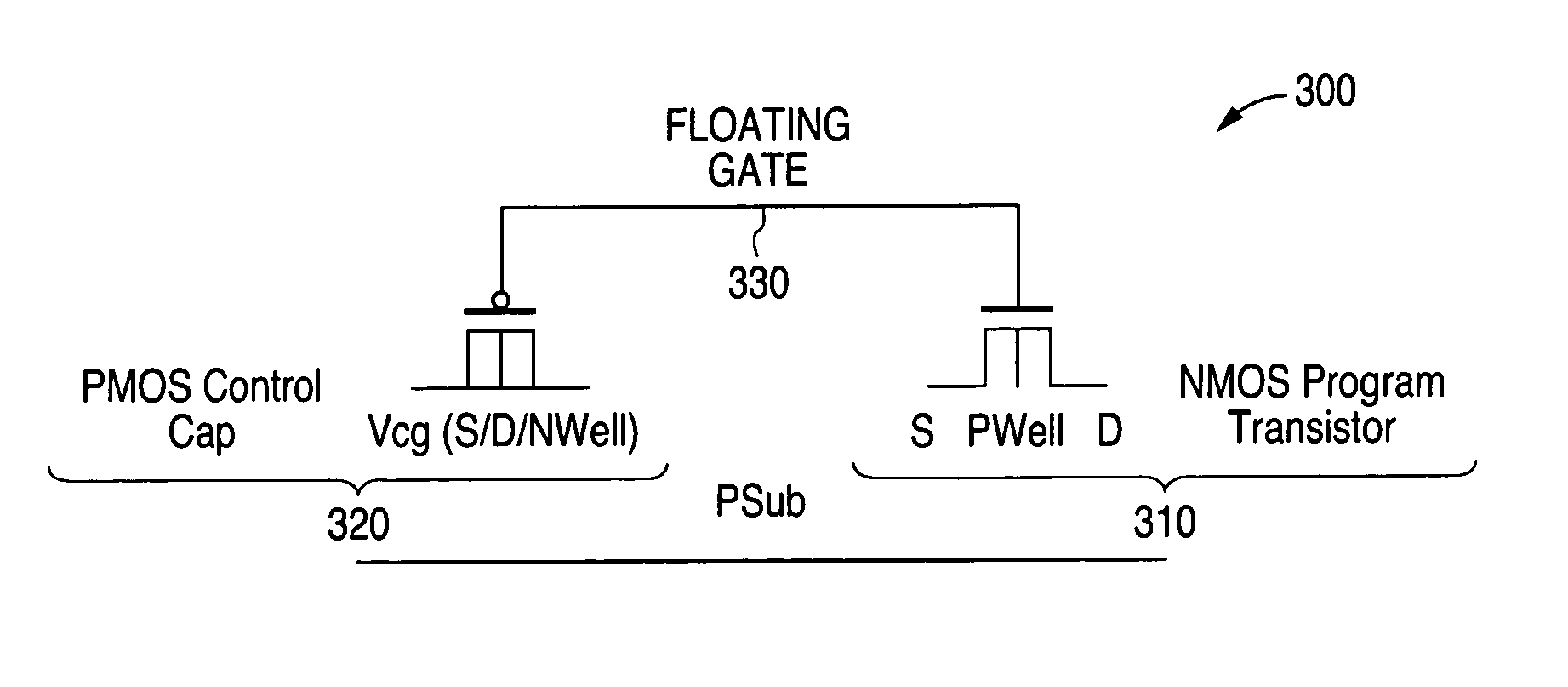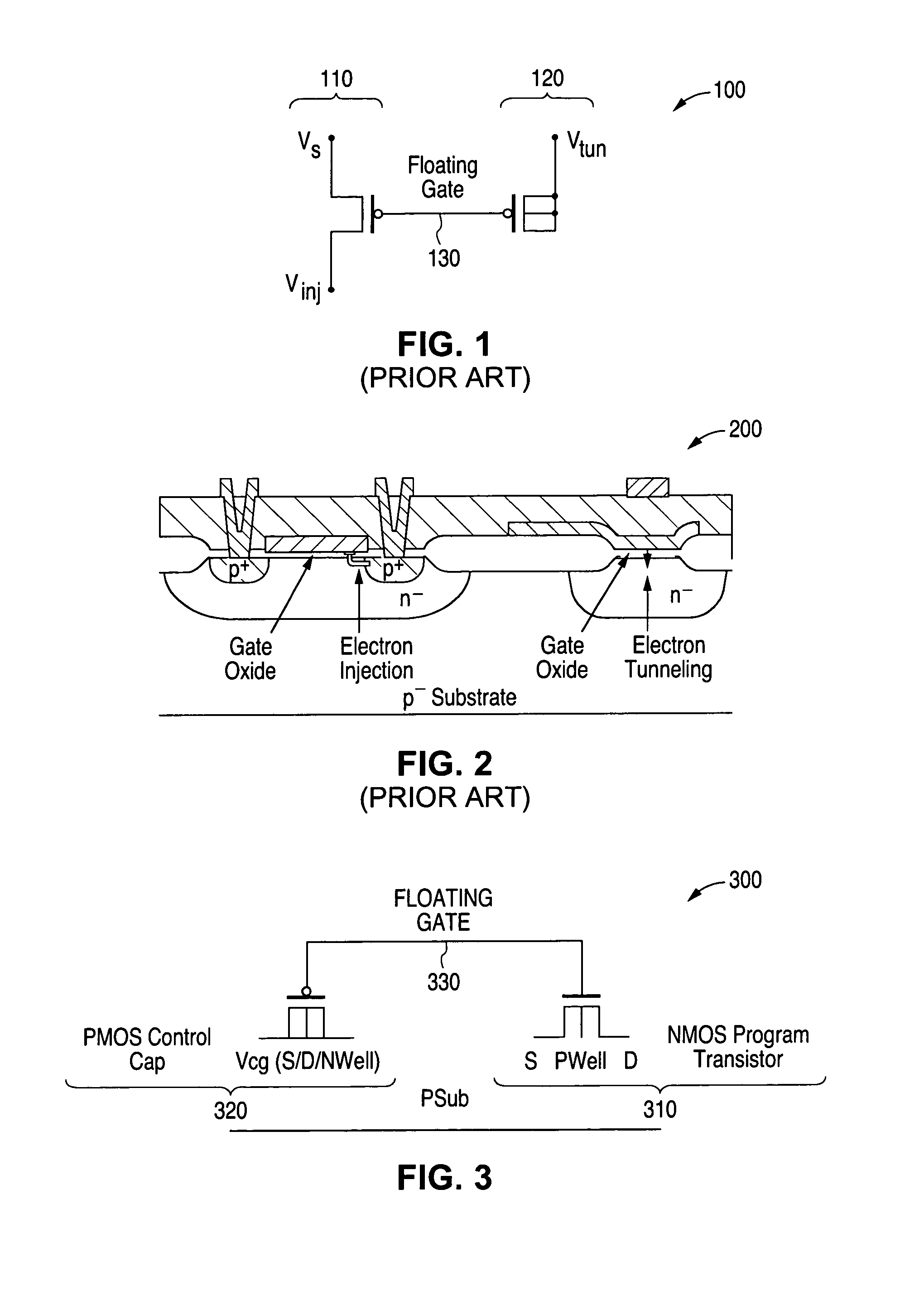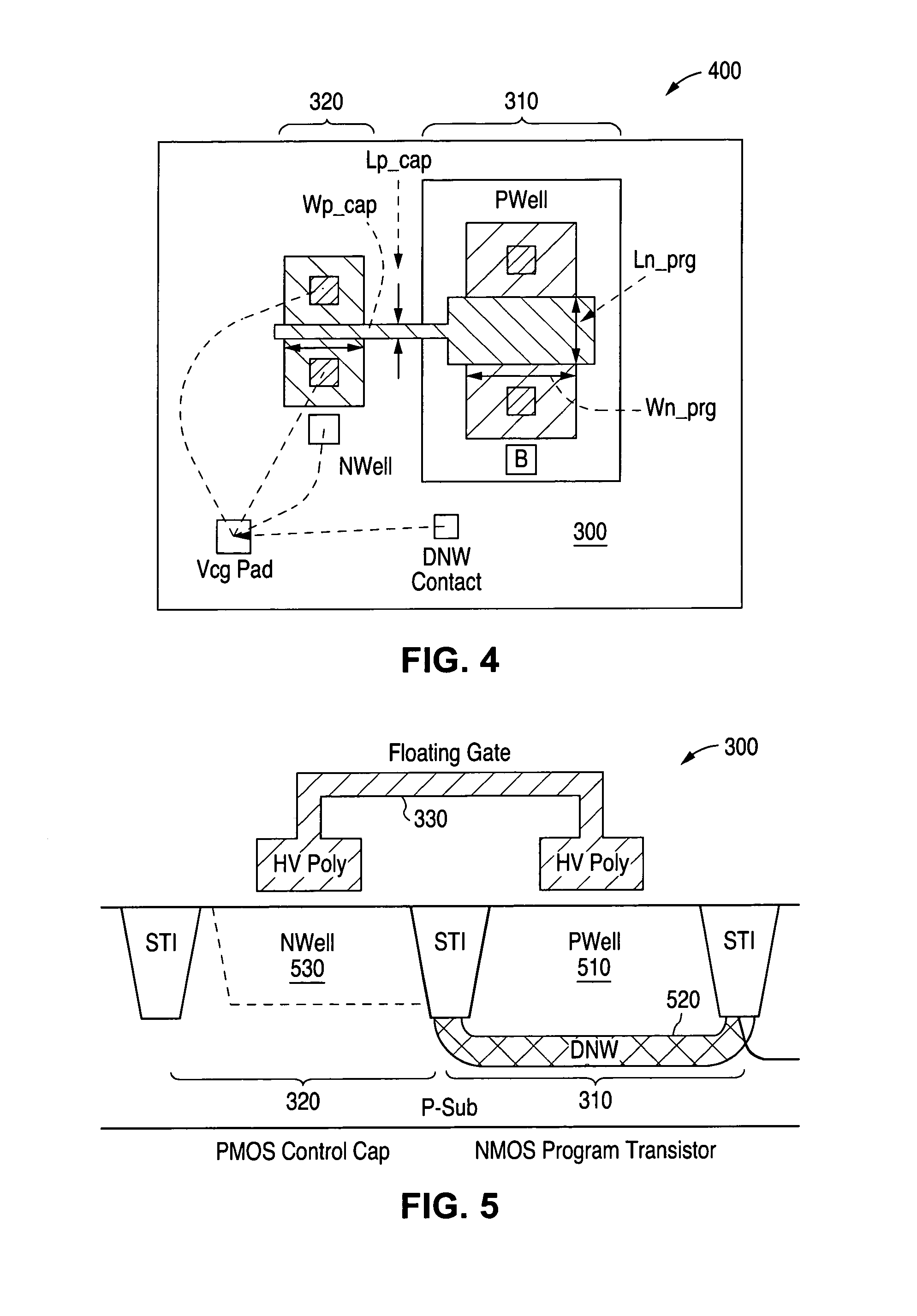System and method for providing a CMOS compatible single poly EEPROM with an NMOS program transistor
a technology of cmos and eeprom, which is applied in the field of integrated circuit manufacturing, can solve the problems of slow eeprom speed, high cost, and high complexity of process, and achieve the effect of improving the speed of eeprom, and improving the reliability of eeprom
- Summary
- Abstract
- Description
- Claims
- Application Information
AI Technical Summary
Benefits of technology
Problems solved by technology
Method used
Image
Examples
Embodiment Construction
[0034]FIGS. 3 through 15, discussed below, and the various embodiments used to describe the principles of the present invention in this patent document are by way of illustration only and should not be construed in any way to limit the scope of the invention. Those skilled in the art will understand that the principles of the present invention may be implemented with any type of suitably arranged electrically erasable programmable read only memory (EEPROM) device.
[0035]FIG. 3 illustrates a schematic diagram of one advantageous embodiment of a memory cell 300 of a single poly erasable programmable read only memory (EEPROM) device of the present invention. Memory cell 300 comprises an NMOS program transistor 310 and a PMOS control capacitor 320. The gate of the NMOS program transistor 310 and the gate of the PMOS control capacitor 320 are connected together (i.e., shorted together) and are isolated from the other active elements. The shorted gates of the NMOS program transistor 310 an...
PUM
 Login to View More
Login to View More Abstract
Description
Claims
Application Information
 Login to View More
Login to View More - R&D
- Intellectual Property
- Life Sciences
- Materials
- Tech Scout
- Unparalleled Data Quality
- Higher Quality Content
- 60% Fewer Hallucinations
Browse by: Latest US Patents, China's latest patents, Technical Efficacy Thesaurus, Application Domain, Technology Topic, Popular Technical Reports.
© 2025 PatSnap. All rights reserved.Legal|Privacy policy|Modern Slavery Act Transparency Statement|Sitemap|About US| Contact US: help@patsnap.com



